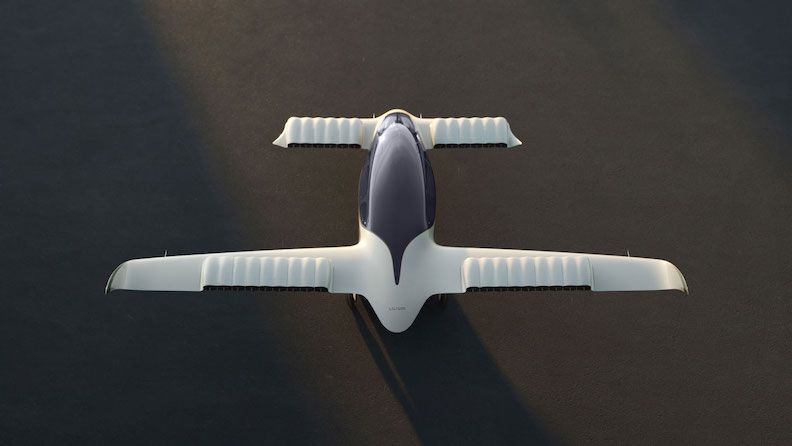
Introduction
The aviation industry has long been associated with innovation and technological advancement. In recent years, the emergence of Electric Vertical Take-Off and Landing (eVTOL) vehicles has captured the imagination of aviation enthusiasts and industry experts alike. Among the pioneering companies in this field is FlyJets, a leading player in the development of eVTOL technology.
Understanding FlyJets
FlyJets is at the forefront of revolutionizing urban air mobility with its innovative eVTOL solutions. The company’s mission is to provide efficient, sustainable, and safe aerial transportation options for urban commuters. With a focus on cutting-edge technology and design, FlyJets aims to redefine the way people travel in densely populated urban areas.
Advantages of eVTOL Vehicles
- Environmental Sustainability: One of the primary advantages of eVTOL vehicles is their reduced environmental impact compared to traditional aircraft. By utilizing electric propulsion systems, eVTOLs produce zero emissions during operation, thus contributing to cleaner air and a healthier environment.
- Reduced Congestion: With the ability to take off and land vertically, eVTOL vehicles can operate from designated urban vertiports or even rooftops. This capability significantly reduces the need for sprawling infrastructure like runways, thus easing congestion in densely populated cities.
- Enhanced Mobility: eVTOLs offer unparalleled flexibility in terms of point-to-point travel. Their ability to navigate urban landscapes swiftly and directly enables commuters to bypass traffic congestion and reach their destinations in a fraction of the time required by traditional ground transportation.
FlyJets’ Innovative Approach
- Advanced Technology: FlyJets is committed to pushing the boundaries of eVTOL technology. The company invests heavily in research and development to continually enhance the performance, safety, and efficiency of its aircraft.
- Safety First: Safety is paramount in the aviation industry, and FlyJets prioritizes this aspect in all its endeavors. From rigorous testing protocols to advanced collision avoidance systems, every aspect of FlyJets’ eVTOLs is designed with passenger safety in mind.
- Urban Integration: FlyJets collaborates closely with urban planners and policymakers to seamlessly integrate eVTOL transportation into existing urban infrastructure. This collaborative approach ensures that eVTOL operations complement existing modes of transportation and contribute to the overall efficiency of urban mobility.
Challenges and Opportunities
- Regulatory Hurdles: The widespread adoption of eVTOL technology faces regulatory challenges related to airspace management, certification processes, and safety standards. FlyJets actively engages with regulatory authorities to address these challenges and pave the way for the safe and efficient deployment of eVTOLs.
- Infrastructure Development: Establishing the necessary infrastructure, including vertiports and charging stations, poses logistical and financial challenges. However, these challenges also present opportunities for investment and innovation in urban infrastructure development.
- Public Perception: Convincing the public of the safety, reliability, and benefits of eVTOL transportation is crucial for its widespread acceptance. FlyJets undertakes extensive public outreach and education initiatives to address any misconceptions and build trust in this revolutionary mode of transportation.
The Road Ahead
Despite the challenges, the future looks promising for FlyJets and the eVTOL industry as a whole. As technology continues to advance and regulatory frameworks evolve, eVTOLs have the potential to transform urban transportation, making it more efficient, sustainable, and accessible for everyone.
Addressing Environmental Concerns
- Zero Emissions: By harnessing electric power, eVTOLs significantly reduce carbon emissions and noise pollution compared to their fossil fuel-powered counterparts. This aligns with global efforts to combat climate change and improve air quality in urban areas.
- Sustainable Infrastructure: FlyJets advocates for the development of sustainable infrastructure to support eVTOL operations. This includes the use of renewable energy sources for charging stations and the integration of green spaces into vertiport designs to enhance urban ecosystems.
Technological Innovation
- Battery Technology: FlyJets invests in advanced battery technologies to improve energy density, charging times, and overall flight endurance. Breakthroughs in battery technology are essential for expanding the range and capabilities of eVTOLs, making them viable for longer-distance travel.
- Autonomous Flight Systems: FlyJets is exploring autonomous flight systems to enhance safety and operational efficiency. By leveraging artificial intelligence and sensor technologies, autonomous eVTOLs can optimize flight paths, avoid obstacles, and respond to changing environmental conditions in real-time.
Collaborative Partnerships
- Industry Collaboration: FlyJets collaborates with leading aerospace companies, technology providers, and academic institutions to accelerate the development and adoption of eVTOL technology. These partnerships facilitate knowledge exchange, resource sharing, and collective problem-solving, driving innovation in the urban air mobility sector.
- Government Engagement: FlyJets actively engages with government agencies and regulatory bodies to shape policies that foster the responsible integration of eVTOLs into urban airspace. Clear and supportive regulatory frameworks are essential for instilling confidence among investors, operators, and the general public.
Economic Opportunities
- Job Creation: The emergence of eVTOL technology creates new opportunities for skilled workers in areas such as aerospace engineering, software development, and maintenance. FlyJets collaborates with educational institutions to provide training programs and career pathways for individuals seeking employment in the burgeoning eVTOL industry.
- Urban Development: The introduction of eVTOL transportation hubs, or vertiports, has the potential to stimulate economic growth and urban development in underserved communities. FlyJets works with local stakeholders to identify suitable locations for vertiport construction and maximize the socio-economic benefits for surrounding neighborhoods.
Public Acceptance and Education
- Community Engagement: FlyJets conducts outreach programs and public demonstrations to familiarize communities with eVTOL technology and address any concerns or misconceptions. Building trust and acceptance among the public is crucial for the successful integration of eVTOLs into urban environments.
- Educational Campaigns: FlyJets collaborates with schools, universities, and community organizations to educate people about the benefits of eVTOL transportation and inspire the next generation of innovators and aviation enthusiasts. By fostering a culture of innovation and sustainability, FlyJets aims to create a brighter future for urban air mobility.
Regulatory Landscape
- Airspace Integration: The integration of eVTOLs into existing airspace regulations presents a significant challenge. FlyJets works closely with regulatory agencies to develop standards for air traffic management, safety protocols, and certification processes tailored to the unique capabilities of eVTOL aircraft.
- Urban Planning: Coordinating with local governments and urban planners is essential for securing landing sites, establishing vertiports, and mitigating potential noise and land use concerns. FlyJets advocates for proactive engagement to ensure that eVTOL operations align with urban development goals and community needs.
Infrastructure Development
- Vertiport Network: Building a network of vertiports to support eVTOL operations requires substantial investment in infrastructure and land acquisition. FlyJets explores innovative design concepts, such as multi-modal transportation hubs and adaptive reuse of existing structures, to optimize vertiport placement and functionality.
- Charging Infrastructure: Deploying an extensive network of charging stations is critical for enabling the widespread adoption of eVTOL technology. FlyJets collaborates with energy providers and infrastructure developers to deploy fast-charging solutions that minimize downtime and support efficient fleet operations.
Technological Advancements
- Range and Endurance: Enhancing the range and endurance of eVTOL aircraft is essential for expanding their operational capabilities. FlyJets invests in lightweight materials, aerodynamic design optimizations, and energy-efficient propulsion systems to maximize flight efficiency and range.
- Safety Systems: Continuous improvements in collision avoidance systems, redundancy mechanisms, and autonomous flight capabilities are paramount for ensuring the safety of eVTOL operations. FlyJets conducts rigorous testing and validation to mitigate risks and instill confidence in passengers and regulatory authorities.
Market Viability
- Cost Reduction: Achieving cost parity with traditional modes of transportation is critical for the widespread adoption of eVTOL technology. FlyJets focuses on streamlining production processes, optimizing supply chains, and leveraging economies of scale to drive down manufacturing costs and make eVTOLs more accessible to a broader audience.
- Consumer Acceptance: Educating consumers about the safety, reliability, and convenience of eVTOL transportation is key to stimulating demand and market acceptance. FlyJets engages in targeted marketing campaigns, demonstration flights, and partnership initiatives to showcase the benefits of eVTOLs and foster public trust.
Environmental Sustainability
- Lifecycle Assessment: Conducting comprehensive lifecycle assessments to quantify the environmental impact of eVTOL operations is essential for informing sustainable design decisions and mitigating potential negative effects. FlyJets collaborates with environmental organizations and industry partners to develop transparent and standardized methodologies for assessing eVTOL sustainability.
- Carbon Offsetting: Implementing carbon offset programs can help mitigate the environmental footprint of eVTOL operations. FlyJets explores partnerships with carbon offset providers and invests in renewable energy projects to offset emissions generated during flight operations.
Conclusion: Charting a Course for the Future
As FlyJets navigates the challenges and opportunities of the eVTOL landscape, it remains steadfast in its commitment to innovation, safety, and sustainability. By addressing regulatory hurdles, advancing technological capabilities, and fostering market acceptance, FlyJets is poised to lead the evolution of urban air mobility. With a collaborative and forward-thinking approach, FlyJets aims to realize a future where eVTOL transportation is not only feasible but also transformative, revolutionizing the way people move within and between cities.
